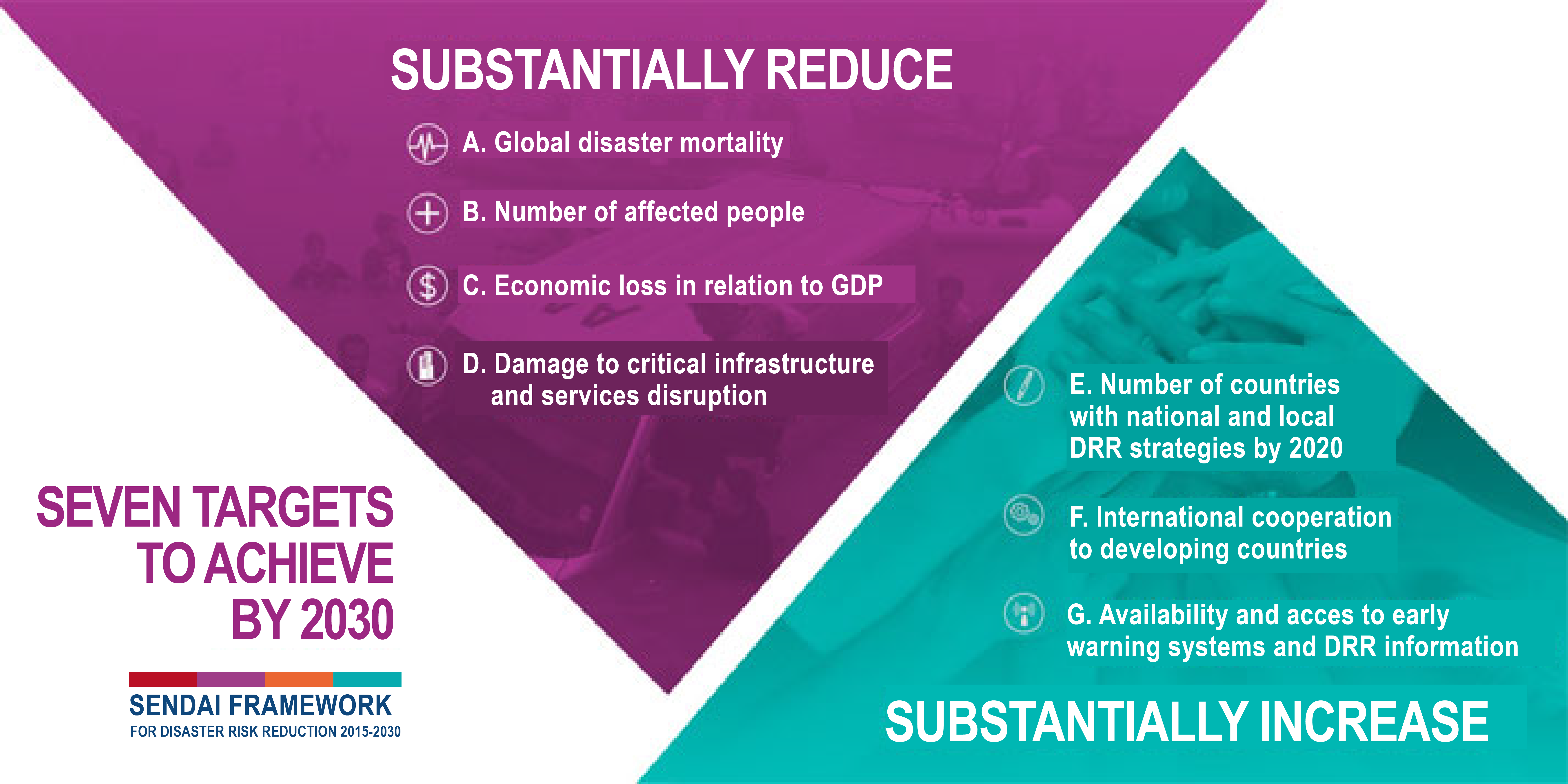
Disaster Management Manual
A manual for practitioners and decision makers!

Disaster Management Manual
A manual for practitioners and decision makers!
United Nations Office for Disaster Risk Reduction (formerly UNISDR) is the United Nations focal point for disaster risk reduction, overseeing the implementation of the Sendai Framework for Disaster Risk Reduction 2015-2030, supporting countries in its implementation, monitoring and sharing what works in reducing existing risk and preventing the creation of new risk. 1

The Sendai Framework for Disaster Risk Reduction was adopted at the Third UN World Conference on Disaster Risk Reduction in Sendai, Japan, on March 18, 2015. Seven global targets and four priorities of action are to be achieved between 2015 and 2030. The UN creates a Global Assessment Report (GAR) every two years to chart the global progress of the Sendai Framework.
“The Sendai Framework is the roadmap for how we make our communities safer and more resilient, it works hand in hand with the other 2030 Agenda agreements, including The Paris Agreement on Climate Change, The Addis Ababa Action Agenda on Financing for Development, the New Urban Agenda, and ultimately the Sustainable Development Goals.” 2
 1. Global disaster mortality
1. Global disaster mortality
2. Number of people affected by disasters
3. Economic loss in relation to global Gross Domestic Product (GDP)
4. Damage to critical infrastructure and disruption of basic services

1. The number of countries with disaster risk reduction strategies
2. International cooperation to developing countries
3. Availability to multi-hazard early warning systems and disaster risk information and assessments